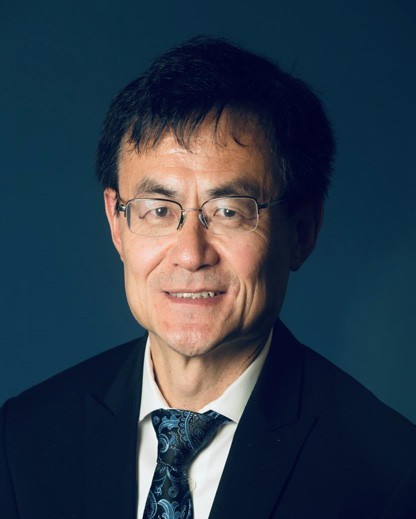Analytics: Flow Cytometry
Cell Phenotyping and Functional Measurements Using Flow Cytometry
IPT recently spoke with Xiaobo Wang at Agilent about what’s been driving demand for flow cytometry and where the technology might be heading
IPT: How has the use of flow cytometry expanded in the last ten years?
Xiaobo Wang: Flow cytometry is a powerful technique used to quantitively measure physical and chemical characteristics of individual cells and other particles in suspension, at a rate of thousands of cells per second. Cells are often tagged with fluorescently-labelled antibodies for different protein targets, allowing flow cytometry to provide multiplexing analysis of many surface or intracellular proteins of individual cells simultaneously. The insights it offers have become increasingly important as cells are now being studied in relation to therapies, such as immunotherapies, and cell and gene therapies. However, it can also be used in molecular biology, bacteriology, virology, cancer research, and the monitoring of infectious diseases. Over the last ten years, there has definitely been an increase in people using flow cytometry assays, and nowadays, many biology laboratories have access to flow cytometry. Importantly, modern variants of the technology are becoming easier to use and more cost-effective. As a result, flow cytometry is increasingly the biggest revenue earner for many companies.
Which application areas are currently witnessing growth?
Flow cytometry is traditionally used in immunology – we’re generally talking about studies of immune cells such as lymphocytes. For example, it has been used in immunophenotyping: a process that uses antibodies to identify cells based on the types of antigens or markers on their surface, to classify and understand different types of immune cells.
Today, flow cytometry’s deployment is also commonplace for cell functional assays around drug development such as cell proliferation, cell activation, cell signalling, cell apoptosis, and cytoxicity. For example, flow cytometry can be used to measure immune-cell killing of cancer cells in a co-culture experiment. Today, the technique is seen as being useful across a wide range of areas covered by biological research.
Are there still barriers to the adoption of flow cytometry?
Things are improving as labs have more analytical instruments than ever. Designing experiments, preparing samples, and running flow cytometry assays takes time, especially when scientists want to run different types of assays. Furthermore, it’s also common for labs to want to do many colour panels where 20 or 30 marker panels are normal. As such, it takes significant time and resources to perform data analysis for biological insights of the experiments.
The good news is that the analytical power of flow cytometry is getting better and better, with increasing levels of automation, which will help time-poor labs optimise workflows.
What are some of the most recent breakthroughs in flow cytometry performance?
Aside from the use of more colour panels, there are new reagents being developed with higher specificity and affinity to the target, improved signal-noise ratio for better resolution and separation of different populations, which are enabling labs to carry out more complicated experiments. We are now able to measure 40, 50, or even more than 100 analytes from millions of individual cells in a single flow experiment – this is where we see Big Data and AI coming into play. There’s also the adoption of spectral flow cytometry, which measures the entire light spectrum emitted from excited fluorochromehores.
The technique, in comparison with a single wavelength range measurement for one fluorochrome in traditional flow cytometry, improves sensitivity.
What does the future hold for flow cytometry?
Not only does flow cytometry need to continue to evolve to keep up with the requirements for cell analysis, but it also needs to be made more accessible to our world’s brightest scientists. Throughout my time in the industry, I have seen a positive change in this area; many individual principal investigator labs now own flow cytometers, allowing biologists – whether they are in universities or in biopharma companies – to conduct cutting-edge research with these powerful instruments.
Flow cytometry developers for instrument, reagents, and software need to work together to maintain this trend to enable global breakthroughs in analysing and understanding the complex cellular environment and processes in the context of life science research, therapy development, and clinical diagnosis. We see that flow cytometry, as a tool accessible to all biologists in the world, will play a much more important role in advancing life science research, therapy development, and production, as well as clinical diagnosis and prognosis, which ultimately leads to advancement of healthcare.

Xiaobo Wang is General Manager of Flow Cytometry and Real Time Cell Analysis business unit PLXA within Agilent’s Cell Analysis Division. Dr Wang is a world-renowned expert and leader in life science tool space for cell sensors, cell processing, and cell assay technologies. Since joining Agilent in 2018 through the acquisition of ACEA Biosciences, Wang has been leading the development and commercialisation of innovative real-time cell analysis platforms and next generation flow cytometry systems. By focusing on meeting customer needs in Cell Gene Therapy and Immuno-oncology markets, Wang led the PLXA team to achieve the penetration and adoption of PLXA technologies and solutions in these emerging and fast-growing markets.
Prior to joining Agilent, Wang was the co-founder and Chief Technology Officer of ACEA Biosciences for over 16 years where he led ACEA team for the invention and commercialisation of electronic sensor platform for label-free, real-time cell-based assays as well as NovoCyte flow cytometry technologies. Before founding ACEA, Wang was the senior director for R&D in AVIVIA Bioscience for around three years. Prior to that, Wang was a faculty member at the University of Texas MD Anderson Cancer Center, US. Over the years, Wang has published more than 60 scientific publications and has over 50 issued US patents in various areas of cell processing, cell analysis, and biosensor technologies.